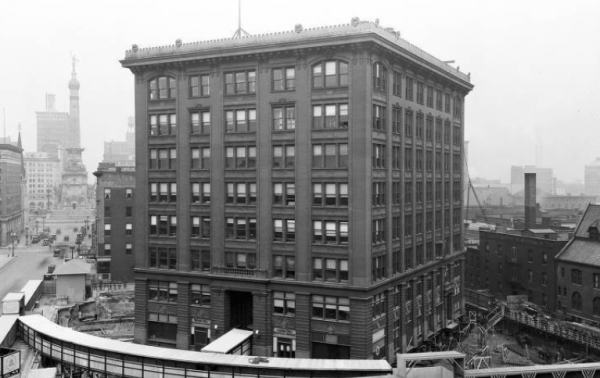8-Story 11,000 Ton Building Was Moved as Employees Worked Inside

© Bass Photo Co Collection, Indiana Historical Society
Buildings are consistently built and demolished nowadays. This can happen for many reasons. However, one big reason why some buildings may be demolished is because the company or owner is trying to relocate somewhere else. But, what if that was not necessary? What if you could just move the built building to a different spot? Think that is impossible? Well, this Indiana Bell Building will prove you otherwise.
What Is the Bell Building?
In November 1930, a remarkable engineering achievement occurred in Indiana, United States. A team of architects and engineers successfully relocated an 11,000-ton telephone exchange. It weighed 22 million pounds. And they moved it without disrupting its operations or the essential supplies for the 600 employees working inside. To understand this feat, we need to trace back to the founding of the architecture firm Vonnegut, Bohn & Mueller in 1888. The architects were Bernard Vonnegut and Arthur Bohn, later known as Vonnegut & Bohn.

The Design
In 1907, Vonnegut, Bohn & Mueller designed the Indiana Bell Building in Evansville. It was a 7-story structure for the Central Union Telephone Company. This Art-Deco building gained recognition in 1982 when it was added to the National Register of Historic Places. They added it for its significance to Indianapolis’ historical identity and the German-American architectural legacy of the city.
In 1929, the Indiana Bell Telephone Company bought Central Union. This was along with the offices designed two decades earlier by the architects. Initially planning to demolish the building to make way for larger headquarters, the company commissioned Vonnegut, Bohn, & Mueller. The new design included offices and a call center operated manually by the company’s staff. The demolition posed a challenge as it would result in an immediate disruption of services.
How Did They Come Up With the Idea?
Kurt Vonnegut, the son of Bernard Vonnegut, was already part of the architectural firm when the phone company proposed a project involving the demolition of their existing building. In response, Kurt suggested a unique solution: relocate the work to save the continuity of call services, avoiding the need to discard a fully functional infrastructure.
The First Relocation
Kurt Vonnegut’s proposal to relocate the 11,000-ton building was approved, and the remarkable feat happened over 34 days. The structure was moved 16 meters from its original location and rotated 90 degrees, with the process completed in the middle of November 1930. Remarkably, this move was finished without any need to call services or the supply of gas, water, and electricity in the building. The move was slowly planned by engineers Bevington, Taggert & Fowler, and executed by John Eichlea Co.

But, How Did They Do It?
The 7-story, 11,000-ton building underwent a meticulous relocation process. Initially, hydraulic jacks lifted the structure. The actual movement occurred with hydraulic rollers placed on a concrete surface, supported by 75-ton spruce beams strategically positioned for this purpose. Workers placed one roller at a time while the building rested on the others, allowing a continuous process. The building moved at a speed of 40 centimeters per hour.
Remarkably, even the entrance hall was connected by a mobile walkway, ensuring rotational movement and continuous access throughout the relocation. According to testimonials from some of the 600 building employees, records from Telephone Collectors International (TCI) show that they did not even notice the displacement of the 11,000-ton structure during the relocation process.
Why the Indiana Bell Building Remains Remarkable
Despite the monumental effort of relocating the building at the intersection of Meridian and New York St, it served only until the late 1950s. The structure was eventually demolished in 1963 to make way for new office facilities catering to the growing number of company operators. Today, the site hosts the offices of AT&T, a 22-story complex that saves some of the original Art-Deco styles from the previous 7-story building which once housed Indiana Bell employees.
Notably, the Indiana Bell Building was among the first worldwide to be relocated rather than demolished. Similar examples include the Shubert Theater in Minneapolis, the Belle Tout Lighthouse in Sussex, England, and the Empire Theater in New York. The ongoing progress in construction and design techniques often shows the renovation of outdated facilities. Moving buildings provides a way to give a second life to structures that would otherwise be demolished to make room for more modern and efficient constructions.
Do you think you would have noticed the move?
You might also want to read: This 18-Year-Old Managed to Recreate the Universe in Minecraft



